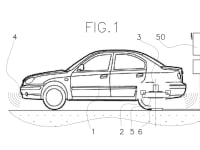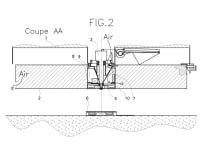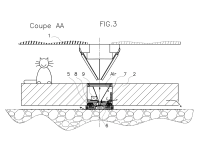The sun is shining and John would like to have a ride. Unfortunately, he cannot do so because the battery of his vehicle is used to store power from photovoltaic panels on his house roof. Sue, his wife, is cooking. She hesitates to turn on the kitchen oven because John is driving the family car so homemade electric power is not available. We are now in winter. Miki, the John’s cat, is looking for a warm and quiet place for a little sleep. The inductive charger in the garage seems to be a good place. Poor Miki, it does not know anything about hazardous electromagnetic emissions. We are proposing here after some solutions to these life dilemmas and much more.
In a previous contest session, vehicle battery can be released and left at garage thank to a simple device fully integrated into the vehicle. Hybrid vehicle remains available with its own thermal power: http://contest.techbriefs.com/2014/entries/automotive-transportation/by-views/4139. Originally this function was designed to decrease vehicle weight and to optimize energy sources, but the releasable battery integrating an electromagnetic receptor can be dropped just over a charger emitter.
For John, emitter and receptor working in contact, means more power and better efficiency.
For Miki, the battery dropped over the emitter prevents access to a dangerous place.
For Sue, the free usage of the battery can improve home economics.
Obviously, the charger is reversible for loading the battery or for smoothing pics load on the grid. As it works as a transformer we got a good ground isolation between the vehicle (battery voltage might be high) and the home grid. Human protection and fault prevention are easier. Communication between the battery and the grid manager can use Wifi for not degrading isolation.
On conventional hybrid vehicle two important functions are supplied by the vehicle to the battery: management of state of charge and ventilation. These two functions have to be transferred to the battery in order to stay operational when the vehicle is away. Fortunately, the releasable battery has a guiding cone which can easily accommodate an air cooling turbine and a manager system. The power is supplied by battery itself. These functions are gathered in a standard and interchangeable block around the guiding cone whatsoever battery type or shape. Ventilation can cool both: the emitter, the receptor and the battery for cost and space saving.
Figure 1 shows a general view of the vehicle not connected to the home grid: the vehicle (1), the releasable battery (2), the battery handling device (3), the vehicle park assist system (4), the electromagnetic receptor (5), the electromagnetic emitter (6) and the home electric grid (50).
Figure 2 shows the battery in its upper position connected to the vehicle: the battery guiding cone (7), the air cooling turbine (8) and its motor (9), the battery manager (10).
Figure 3 shows the battery in its lower position connected to the grid.
Like this entry?
-
About the Entrant
- Name:Denis Buffet
- Type of entry:individual
- Software used for this entry:excel
- Patent status:patented








